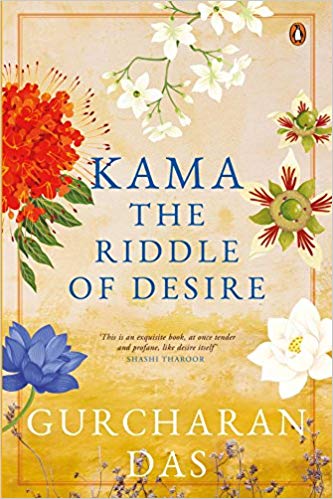Dharma, artha, kama and moksha are the four purusharthas in Hindu philosophy. A purushartha is an object of human pursuit or a purpose of a human being. Gurcharan Das has written about artha (India Unbound) and dharma (The Difficulty of Being Good). Now, he has written about kama–perhaps the biggest challenge of his career as a writer.
Artha is fairly easy to define. It means wealth or property in Sanskrit, for an individual, for a nation or whatever. Dharma is a bit more complex. It means religious or moral duties and is very often rather subtle. In many cases there is nothing clear-cut or unambiguous about dharma and its uses. But, kama is the most difficult of the four. It means longing or desire and as such, deemed worthy in ancient times to be a purushartha. Unfortunately, down the ages, its meaning has become degraded, and now, it is popularly used to denote lust, both sexual and otherwise.
What is kama really? The Mahabharata calls it desire, the essence of life. It is the driving force of life, without which creation would not have happened. It is the delight that the five senses enjoy in the natural beauty of the world. The Rig Veda says that kama or desire was the firstborn of all things and from kama, the world was born. Desire begets intention, and intention turns into determination. From determination action is born and action is the mark of a human being. According to Hindu mythology, Brahma, the Creator, fell in love with his first creation and had children through her. Life thus came into being because of kama. It is a powerful, irresistible force, which is ‘procreative; capable of ecstatic pleasure; and wildly uncontrollable’. And, therein lies the rub. Uncontrollable, ecstatic pleasure, particularly in women, could be very harmful to an ordered society controlled by patriarchy.

